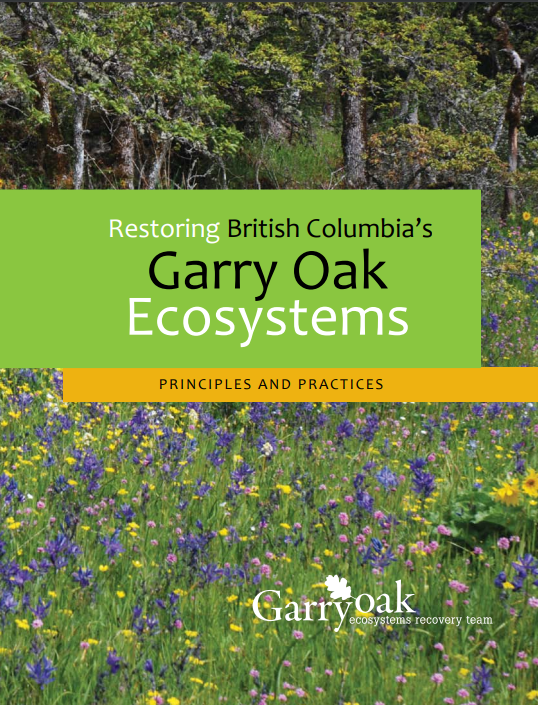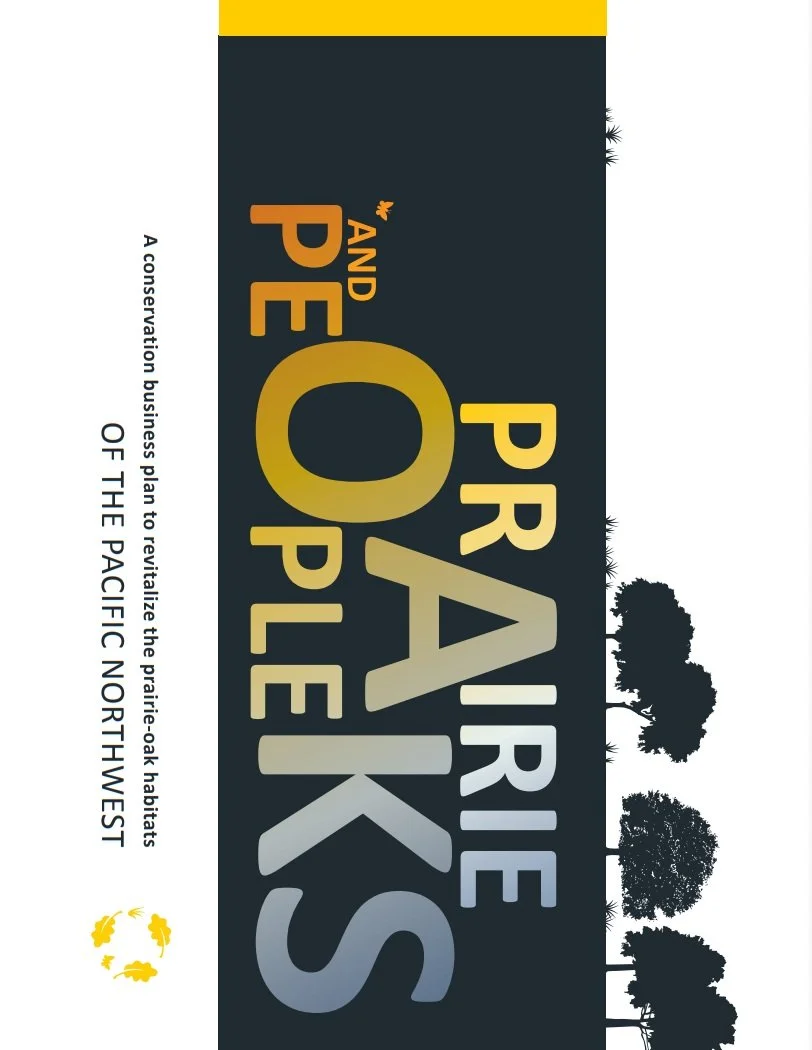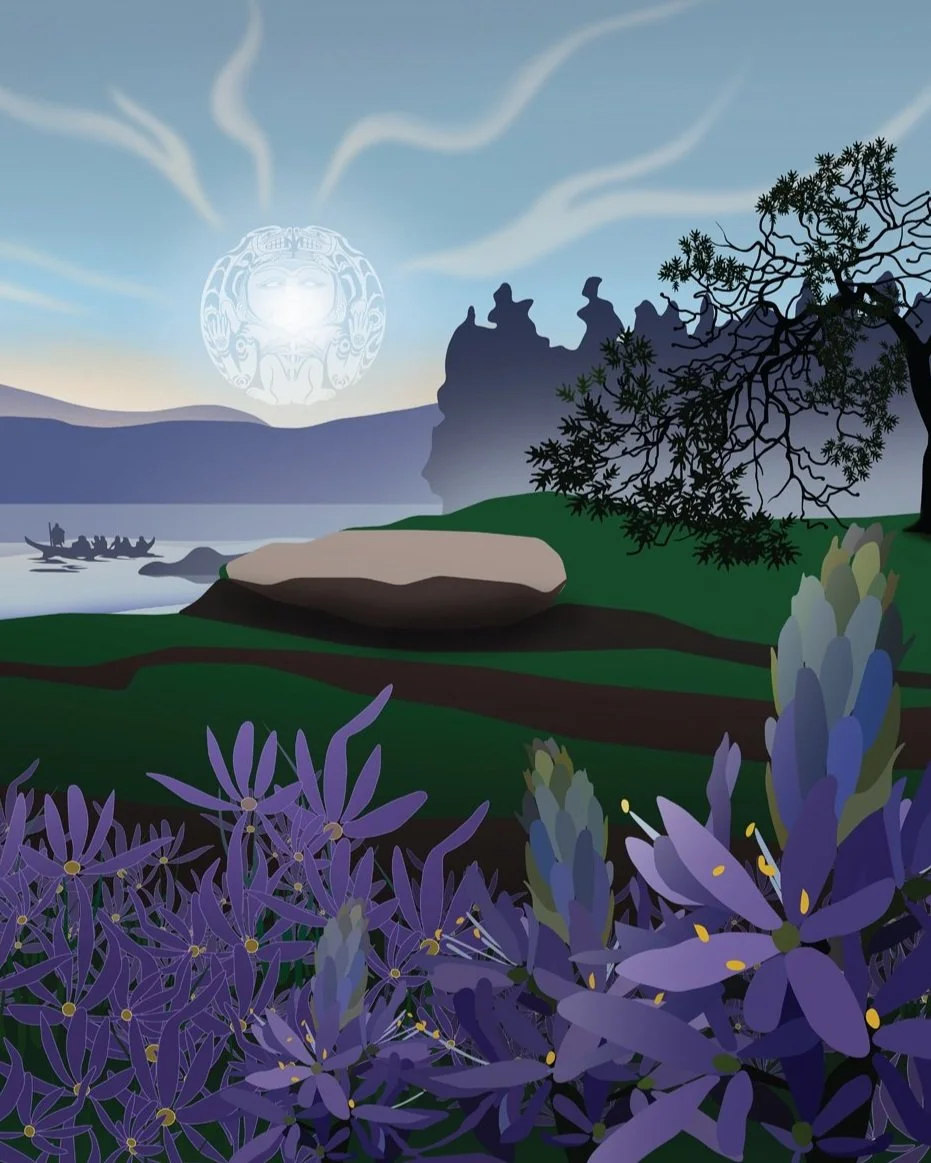
Prairie-oak Areas | Oak Meadow Ecosystems
What are prairie-oak areas?
A landscape of many names, these unique natural features are also referred to as Garry Oak and Associated Ecosystems, prairie-oak meadows, coastal oakscapes, Oregon white oak savannas, and many more. Although the oak has been named as the central anchoring species of these habitats in the past, it is not always present and
Once an expansive prairie cross the south islands of the Salish Sea, today only about 3% of these are prairies left. Those remaining are endangered ecosystem with over 100 species of birds, pollinators, mammals, and plants are officially listed as “at risk” of extinction - disappearing forever.
There are an incredibly biodiverse suite of several different prairie-associated ecosystems to discover - deep soil savannas and woodlands, rock outcrops and coastal bluffs, maritime meadows and treeless grasslands, along with seasonal wetlands and small pools which disappear in summer.
These landscapes are characterized by openness, and the presence of certain plants, and are only found in the Pacific Northwest. Their ability to thrive in drought-stricken summers and wet winters make them a great choice for any gardener wishing to save water and are a powerful option in a naturescaper's effort to increase our regional climate resilience.
That is why it is important now more than ever, to learn about these unique ecosystems, and to protect and restore every inch we have left.
Kwetlal - A Food System
As residents in this beautiful region, we respectfully acknowledge the immense significance of these habitats as cultural landscapes to all of the Indigenous communities in the region. These are not just meadows, but Cultural Keystone Places that “express a long and intimate relationship between Peoples and their natural environments, reflecting specific techniques of sustainable land use, the characteristics and limits of the natural environment they are established in, and a specific spiritual relation with nature” since time immemorial. We recognize and greatly appreciate the ongoing efforts by Lekwungen and W̱SÁNEĆ communities to reclaim and restore these ecosystems from colonial and ecological destruction.
As a proud member of the Songhees Nation and lək̓ʷəŋən (Lekwungen) People, Cheryl Bryce shares with us that “diverse ecosystems, such as the Garry Oak Ecosystem (GOE), which is known for the kwetlal (camas, a starchy bulb that has been a staple food and trade item for Indigenous Peoples in the region for generations), have thrived on Lekwungen territories for centuries. GOE's remain vital to the kwetlal food and trade system, and Lekwungen communities were known worldwide as the place to trade for kwetlal.” Read more by Cheryl here and watch a video below.
Xwsepsum (Esquimalt) Nation Artist Darlene Gait - interpretation of kwetlal meadows - copyright Darlene Gait.
Lekwungen and W̱SÁNEĆ Meadow Stewardship
Learn more from Cheryl Bryce (left) and PEPÁḴIYE and Tiffany Joseph in videos below
LEARN MORE
*
LEARN MORE *
Meadow Makers Program at Satinflower Nurseries
Become a Satinflower Meadow Maker
Other Organizations
Garry Oak Ecosystems Recovery Team (GOERT)
Cascadia Prairie Oak Partnership (CPOP)
Articles About Oak and Prairie Areas:
Caring for Kwetlal in Meegan
by Maleea Acker
Pacific-Oak Ecosystems of the Pacific Northwest
by Ecological Landscape Alliance
Garry Oak Ecosystem - Information Sheet
by the Capital Regional District
What you should know about Garry oak savannas in Victoria
by Martlet
Coastal Oakscapes
by Hakai Magazine
Prairie, Oaks, and People – A Conservation Business Plan to Revitalize the Prairie-Oak Habitats of the Pacific Northwest
by Cascadia Prairie Oak Partnership
Practicing Sustainable Self-Determination: Indigenous Approaches to Cultural Restoration and Revitalization
By Cheryl Bryce and Jeff Corntassel

Native Plant Friendly Nurseries
Get Involved
Most people don’t live on a Garry Oak Meadow but that doesn’t mean that you can’t make a difference. Volunteering to restore some of Canada’s most endangered ecosystems is a great way to make a difference and to learn new and exciting skills.
-
Matson Mattocks at Matson Conservation Area in Esquimalt
Friends of Havenwood Park in Havenwood Park, Colwood.
-
Great Resources
-

Garry Oak Gardener's Handbook
Nurturing Native Plant Habitat in Garry Oak Communities
-

Restoring British Columbia's Garry Oak Ecosystems
Principles and Practices
-

Prairie, Oaks, and People
A Conservation Business Plan to Revitalize the Prairie-Oak Habitats of the Pacific Northwest


